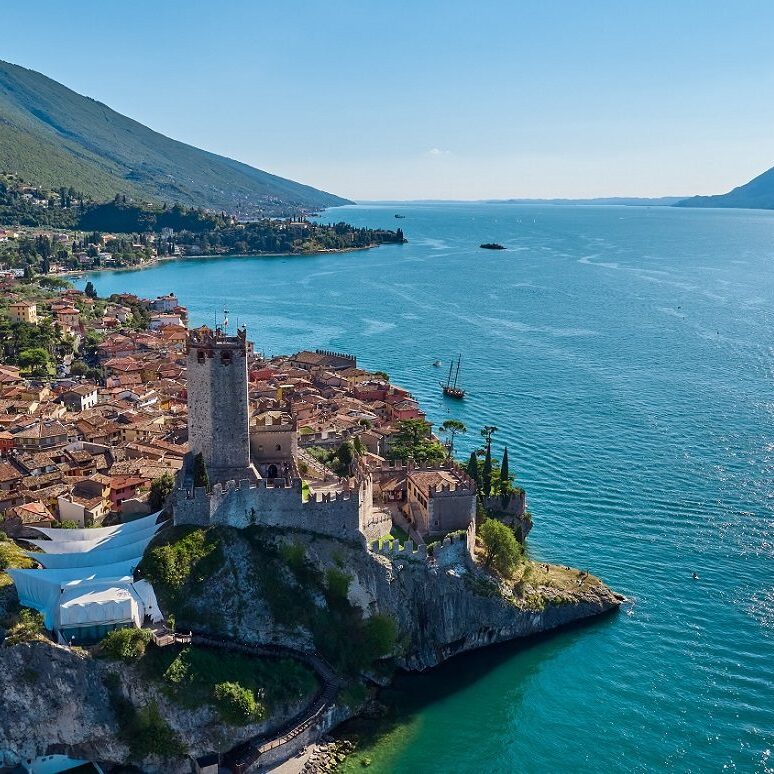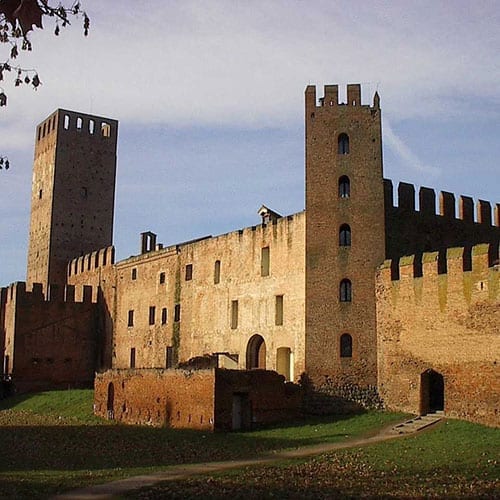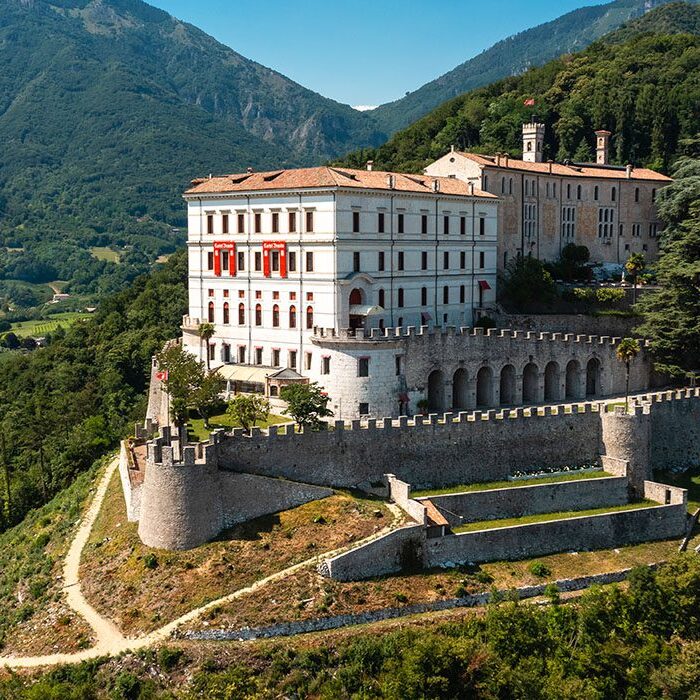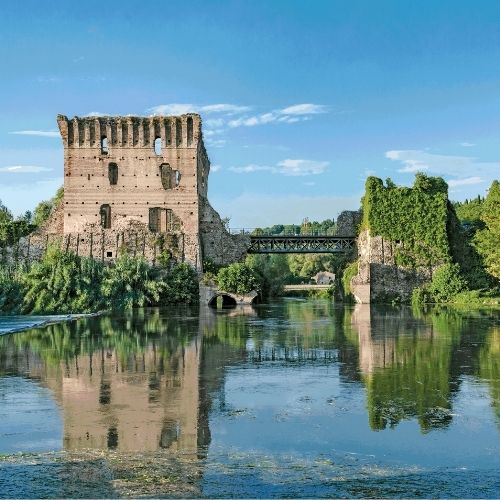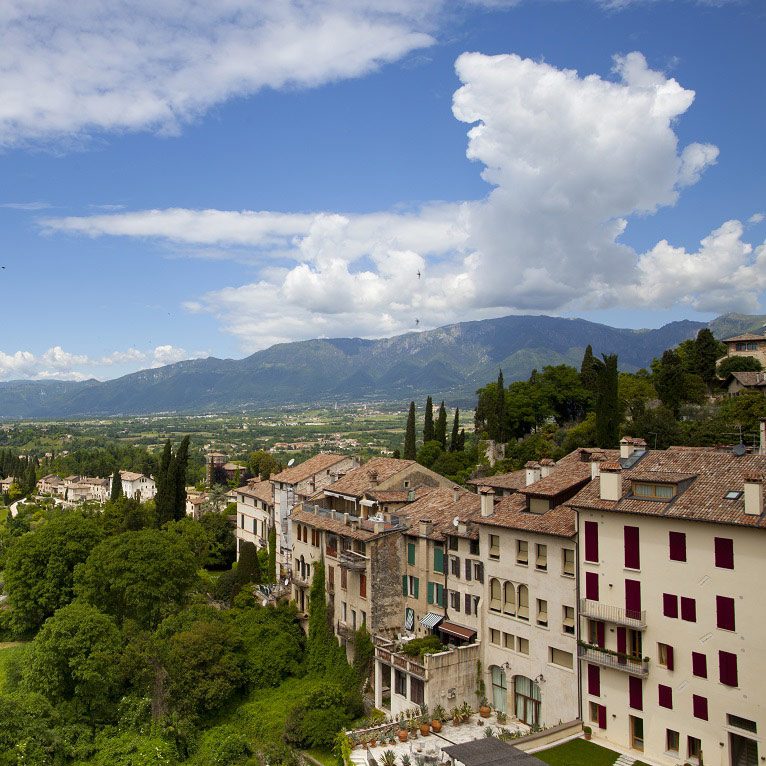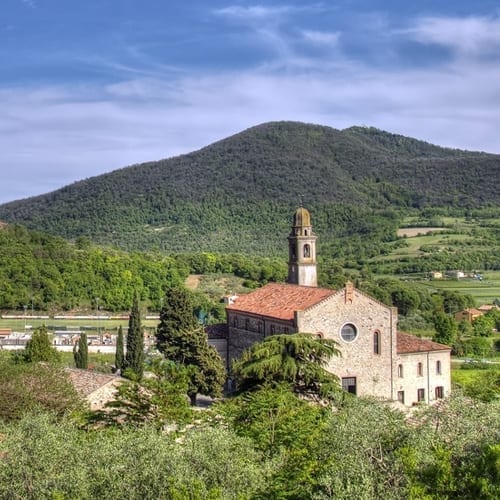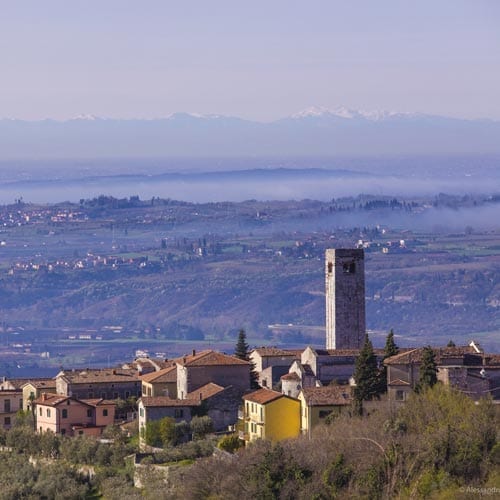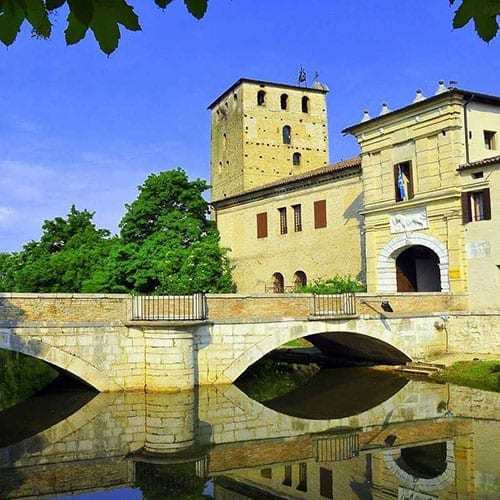 Mel di Borgo Valbelluna
Mel di Borgo Valbelluna
MUNICIPALITY OF borgo valbelluna
(Belluno District)
Altitude
mt. 352 a.s.l.
POPULATION
5970 (1240 in the borgo)
TOURIST INFORMATION
Tourist office, Piazza Papa Luciani, 3
Ph. 0437 544294
 The castle of Zumelle, the best preserved in Valbelluna, was the twin castle of Castelvint, destroyed after a battle: a Byzantine fortress that stood only 300 meters away, but separated from the gorge of a stream. The relationship between the two fortifications is the origin of the name: Castrum Gemellarum, (“twin castle”) became Zumellarum, finally Mel for contraction.
The castle of Zumelle, the best preserved in Valbelluna, was the twin castle of Castelvint, destroyed after a battle: a Byzantine fortress that stood only 300 meters away, but separated from the gorge of a stream. The relationship between the two fortifications is the origin of the name: Castrum Gemellarum, (“twin castle”) became Zumellarum, finally Mel for contraction.
At the end of the ninth century BC, going up from the plain along the Piave river, the ancient populations of Veneto arrived on this hill that seemed to them a good place to stop. The testimonies of their settlement are preserved in the Archaeological Museum: the findings coming from the necropolis, discovered in the years sixties, are datable between VIII and V century BC. Later, and until the third century BC, the place was inhabited by Gallic populations, as evidenced by the place names of some hamlets and the findings of Celtic objects. The passage of the Romans is commemorated by a walled plaque and a stone sarcophagus near the parish church of Mel, and a stone of the Via Claudia Augusta Altinate, a stretch of which probably ran between the town of Nave and the Praderadego pass, passing through Mel.
The castle of Zumelle was built to guard the pass, during the fights between Ostrogoths and Byzantines, a building which was symmetrical to the castle standing at Castelvint: here in late 1937 the beautiful silver patera (V-VI century) was found, today it is preserved at the National Archaeological Museum of Venice. From 568 to 1196 (the year of its destruction) the castle of Zumelle was the object of a dispute between the bishops and the dioceses in which the Lombard duchy was dismembered between the 9th and 10th centuries. In the twelfth century the castle reached its maximum expansion: it had four walls, two moats and four towers. The current manor is what remains of the reconstruction carried out by Rizzardo da Camino in 1311. In the Venetian period it was restored by Giorgio Zorzi. It was then owned by the Gritti family who, at the beginning of the nineteenth century, sold it to the Municipality of Mel.
From 1404 to 1797 the town was under the protection of the “Serenissima” Republic of Venice, and was governed for three centuries by the Zorzi Counts and, in the last period, by the Gritti family. The noble palaces that embellish the historic centre of Mel date back to the same period
Before reaching the high ground on which the borgo stands, you can see the seventeenth-century Villa Luzzati with its chimneys on the corners. Taking the street climbing to the city centre, leaving on the right the small temple Fulcis – the work of 1836 Giuseppe Segusini – you will find Villa Granelli and, further on, Villa Migliorini (today Tonon), which with its large façade and slender fireplaces recalls the structure of the sixteenth century Venetian villas.
Through a narrow street, you’ll come to the main square, a trapezoidal space that looks like a scenic backdrop where buildings of different eras harmonize perfectly. Among these, the sixteenth-century Palazzo Zorzi houses the Town Hall, frescoed in the hall on the first floor by Marco da Mel with episodes of the Orlando Furioso (1545). Opposite, the seventeenth-century Villa Fulcis with the adjacent Fulcis Palace of the following century, surrounded by its park. In the north-west corner of the square, the seventeenth-century Palazzo delle Contesse houses the Archaeological Museum. Next door, Palazzo Barbuio is the oldest of all, since the main body dates back to the fourteenth century.
The square is closed to the north by the bulk of the eighteenth-century parish church, a fine example of Palladian tradition. Inside there are works by Girolamo Denti (16th century), Giovanni da Mel (1531), Cesare Vecellio (1580-90) and a remarkable local painter, Luigi Cima (1860-1944). Nearby is Mel oldest church, dedicated to Our Lady of Sorrows, dating back to the late fifteenth-century. Injured by a lightning in 1756, it was rebuilt but still retains a Pietà (Vesperbild) contemporaneous with its foundation, a work by Giovanni da Mel and Dello Schiavone. Leaving the square you can see the seventeenth-century Palazzo Pivetta, under whose arch the ancient Via Karèra once passed.
Each hamlet in Mel has its own church. Fifteenth and sixteenth centuries frescoes, sixteenth-century stone altars and seventeenth century wooden altars and painted altarpieces are some of the artworks you can admire here. Worth seeing in Farra is the church of San Teonisto (early sixteenth century) where Giovanni da Mel painted a Last Supper. And near the castle of Zumelle you can visit the church of San Donato, of Lombard origin.
The highlight of the Archaeological Museum, which displays the grave goods of the Paleovenetian necropolis, is a Celtic-shaped fibula in the shape of a feline. In the necropolis, the cassette tombs are contained in seven stone funerary enclosures.
Palazzo Fulcis (now Guarnieri) is the seat of the Apple exhibition in Mel. On the second weekend of October, the owners open courtyards and palaces to visitors who come to taste the hundred varieties of apples and typical products, and for the exhibition of handicrafts that takes place in the old city centre.
Radicele is the name of the spring market exhibition (third weekend in May) dedicated to wild herbs (dandelion, nettle, hops) used in the local cuisine.
Sponcio corn polenta and Schiz cheese, barley and bean soup, brewed barley, spelt salad with vegetables and Piave cheese are some delicious local dishes.
Guarda tutti i video sulla pagina ufficiale Youtube de I Borghi più belli d’Italia.

